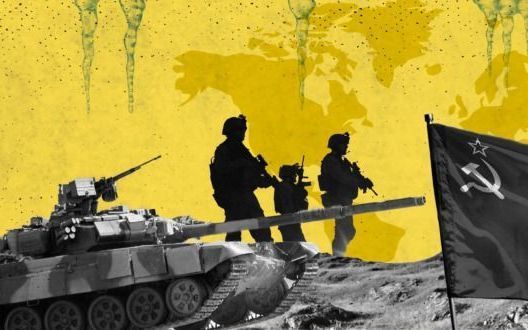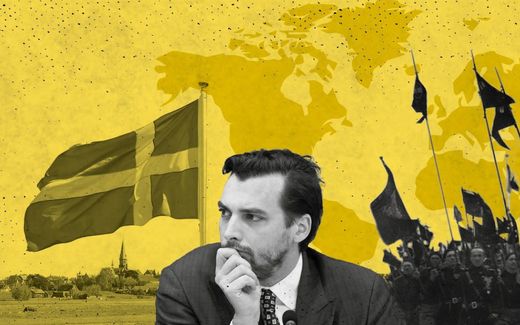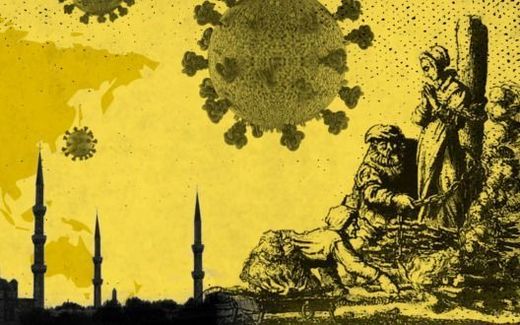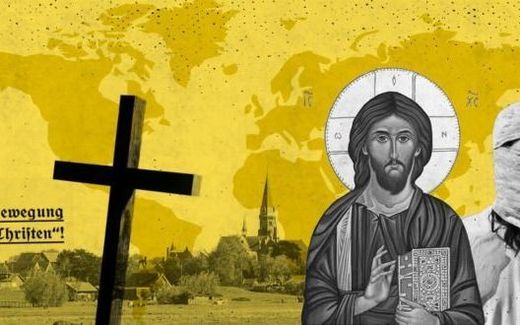A frozen conflict can thaw quickly
18-11-2022
Opinion
Jacob Hoekman, RD

Photo Corné van der Horst
Opinion
Friend and foe alike increasingly realise that the war in Ukraine is a long-term affair. Russia will prove unable to achieve all of its goals in the country. Still, it will be extremely difficult for Ukraine to recapture all its territory.
What is likely to happen is that the fighting will gradually decrease in intensity. Because of fatigue in the two countries or because the supply of troops and equipment will stall. You can already see this happening.
Us vs them
Journalist Jakob Hoekman researches history to find answers to difficult questions related to the news.
If things indeed go there in Ukraine, there will be a situation where the conflict is frozen. It would not be the first time: Russia, in particular, has a habit of ending - or in fact, not ending - disputes in this way.
Antagonism
Because that is the problem with frozen conflicts: for any reason, the thaw can set in just like that, and weapons can be taken up again. That is why frozen conflicts are a security challenge in Europe. On the surface, everything seems peaceful. But when the thaw sets in, it suddenly becomes clear how irreconcilable the antagonisms under the surface have been all along.
What does such a frozen conflict look like? For that, you can, of course, look at significant conflicts far away, such as the conflict between India and Pakistan over the Kashmir region. Or between China and Taiwan. Or between Israel and Palestinians.
Frayed edges
But we can also stay much closer to home. The frayed eastern edges of Europe are made up of frozen conflicts, as it were - and many, like those in Ukraine, are a legacy of Soviet times.
So there is Transnistria, the unrecognised republic on the eastern side of Moldova, bordering Ukraine. The Russian-speaking population there was and is afraid of losing out to the Moldovan political course, which is more oriented towards Romania than Russia. Naturally, Russia felt a calling to advise and assist these brothers and sisters in Transnistria.
Then there are the frozen conflicts of the Caucasus, especially those in Abkhazia and South Ossetia. A similar mechanism can be seen there. Do South Ossetia and Abkhazia belong to Georgia? Parts of the population do like the idea that they are better off under the Russians - again, a sentiment eagerly fed from Moscow.
Soviet times
Why is it that precisely Russia plays a role in all these frozen conflicts? The answer is: because Russia has a history dating back to Soviet times in all these areas. Russia believes it still has a say in those areas and reinforces that opinion by creating facts in practice.
For example, by funding local insurgents or stationing military personnel there. So you get a situation where the country where the conflict occurs (Ukraine, Moldova, Georgia) no longer has complete control over its territory. If the aggressor cannot win for all sorts of reasons but considers the conflict significant enough, it will ensure that it has a substantial military presence in the conflict zone - directly or indirectly. The home country can do little against this without starting a full-scale war and probably having to lose it. As a result, nothing happens, and a solution slowly but surely disappears from sight. Behold the recipe for a frozen conflict.
Military zone
But it is not only Russia that tends to freeze conflicts this way. Last summer, I visited the example in Europe that, I think, is most imaginative when it comes to frozen conflicts: Northern Cyprus. There, a NATO country and candidate EU member, namely Turkey, has occupied part of another NATO country and EU member, namely Cyprus, since 1974. As a result, a military zone runs straight through the Cypriot capital Nicosia, where all buildings have been abandoned. The world's last divided capital, Nicosia, has been called. These are surreal scenes.
This conflict has been frozen so long that a certain ease of mind has developed. There has even been a conflict tourism boom. With your passport in hand, you can easily cross from Cyprus to northern Cyprus on foot.
Anyone paying close attention, however, can see that underneath that conviviality, there is still a lot of tension. This is represented just by a huge Turkish Cypriot flag painted on the northern Kyrenia mountains. "Ne Mutlu Türküm Diyene", it reads. "How happy is the one who can say: I am a Turk".
Embargo
Occasionally there are small eruptions, such as a few weeks ago when US jets flew over the Turkish-occupied part of Cyprus. In September, the Americans had already lifted an embargo on arms sales to Cyprus. This embargo had been in place since 1987.
Turkey, for its part, has not demilitarised the situation either. Northern Cyprus is only 3,355 square kilometres, but it has 35,000 Turkish military personnel stationed there. This is typical of areas with frozen conflicts: there is often a huge military presence.
Underestimate
The moral of the story? Don't underestimate the potentially destructive power of frozen conflicts. Ukraine, too, was a frozen conflict until 2014, when Russia took Crimea. Yet many Western eyes remained closed to the gravity of the situation until earlier this year.
You don't want something like this to happen again in other frozen conflicts. In the case of India and Pakistan, for instance, that could turn into a giant nuclear war. Conflict management is, therefore, the magic word. Keeping a frozen conflict firmly below zero through diplomatic means is about the best you can hope for in explosive contexts. But of course, it is not a real solution.
This article was translated by CNE.news and published by the Dutch daily Reformatorisch Dagblad on November 15, 2022
Related Articles






